Japan has many convenience stores – that’s part of what makes them so convenient. I discovered recently they they’ve actually got more dentists than convenience stores – in fact, almost twice as many, with 103,000 practicing dentists, but only 56,000 convenience stores. I’m… honestly not sure what that implies.
So, today after breakfast…
I headed out of the hotel to do the activity I’d originally come here to do, the Chichibu 34 Kannon Pilgrimage. This is going to take a bit of exposition – this is the reason why I visited Jigen-ji yesterday, and you’ll shortly see why I deferred on posting the full explanation at the time.
In ye olde Japan, doing pilgrimages was a thing (I mean, it still kind of is); by travelling from temple to temple, pilgrims gain physical and mental wellbeing. Pilgrimages focused on Kannon in particular became quite popular. Kannon is also known as Avalokiteśvara in Sanskrit, Guan Yin in Chinese, sometimes written as “Kwannon” in older English texts, and often translated as “Goddess of Mercy”, although a direct translation of “Kannon” is “hearer of cries”.
In the 12th century, the first official pilgrimage course was established in western Japan – comprising thirty-three Kannon temples (because Kannon is said to appear in thirty-three forms – though you won’t find that each temple enshrines a unique form), it was known as the Saigoku 33 Kannon (Saigoku = west country). In actual fact, I’ve already been to two of the Saigoku temples: Seiganto-ji at Nachi Falls (visited in 2017) is temple number 1, and Kiyomizu-dera in Kyoto (visited in 2010) is temple number 16. The Saigoku 33 temples are spread out over seven prefectures, and takes about a month to travel the route on foot.
At the end of the 12th century, this was followed by a new pilgrimage, the Bando 33 Kannon, which is in Kanto, starting in Kamakura and ending in Chiba (“Bando” is an old name for Kanto). Again, I’ve already visited two of the Bando temples: Hase-dera in Kamakura (visited in 2017) is temple number 4, and Sensoji in Asakusa (also visited in 2017… actually, the day before I visited Hase-dera) is number 13. Again, this is quite a long route, and takes quite a long time to walk it.
Given the length of the courses, it was often quite popular to create miniature versions of the pilgrimages – for example, a temple priest could do the pilgrimage, and bring back, say, a rock from each temple to his own temple, where he’d set up these rocks on the temple property, and people could visit the rocks in sequence to gain the same spiritual benefit, but only take a single hour to do so. Or, for a slightly larger scale, the town of Chichibu set up a pilgrimage with its own Kannon temples, forming the Chichibu 33 Kannon.
But wait, I said 34 earlier. Well, yes – one extra temple was added later on, which resulted in the sum of the Saigoku, Bando and Chichibu pilgrimages to be precisely 100. The Chichibu Pilgrimage has long been popular for the people of Edo, because it was close enough to get here in a day. Not all of the temples are particularly large –some of them are even just Kannon halls within larger temples – and about half are actually staffed by volunteer locals rather than actual priests. But even today it’s popular to come up as a day trip, do a few temples, and then return to Tokyo.
The usual procedure is to visit a temple, make a donation, pray at the image of Kannon (or its substitute, if the primary image is not out on display), maybe light incense or a candle, then get a goshuin in your little book. Traditionally, you’d receive the goshuin as reward for reciting a sutra or some other service, but these days you get it in exchange for a monetary donation – usually 300 yen, but sometimes 500. This, incidentally, is why the priest at Tennoji back in 2017 initially refused to give me a goshuin – because I’d asked if I could buy one, when I should have asked if I could receive one. The pilgrimage is traditionally done on foot, naturally, but there’s a lot of people these days who drive the route, and there’s even bus tours that take you to each temple, with a priest on board to perform services. It’s also traditional to stick a piece of paper with your name in calligraphy somewhere on the temple gate or main hall – the more protected from the elements, the better, so you’ll frequently see them stuck to the ceiling. Originally these were just paper and paste, but these days you can buy ones which are actual stickers, but there’s some objection to these, because they’re harder to remove without damaging the temple. Though, it could be worse – the original version were wooden tags that pilgrims actually nailed to the temples.
Which brings me to me. I’ve been kind of interested in perhaps doing the Shikoku 88 Temple Pilgrimage, entirely on foot, for a while. Considering that it’s 1200 kilometres long, though, I thought it might be nice to get some practice in. Cue Chichibu. The total length of the Chichibu 34 Kannon is just 100km, but of those 100km, the last four temples in the route represent 40 – the first thirty temples have an average separation of just 1.8km, making it quite feasible to just do a few temples and then stop. My original plan was to spend three days in Chichibu, and hopefully get all the way from temple 1 to 30. Then I discovered the Ryusei Matsuri fell on the Sunday, so I’d do pilgrimaging on Saturday and Monday, and maybe get 20 temples visited. I mean, I skip some of the Buddhist worship aspects, to be fair, but…
Though, that was going to require some discipline – the last time I attempted any sort of pilgrimage, the Kamakura Shichifukujin, I only got half of it done, because 5km of walking (which should have taken an hour, according to Google Maps) wound up taking me all day. This is kinda why I was fretting a bit about this part of the trip.
The plan was perhaps temples 1-9 on Saturday, then 10-18 on Monday. Then Hagibis forced me to swap my Saturday and Monday plans, and then cancel Saturday outright. But it turned out that temple 33 – one of the later, more spread-out temples – is just a half hour’s walk from Muku Shrine, where the Ryusei Matsuri was. To do the Chichibu pilgrimage, you need a special kind of shuincho – well actually, these are called nokyocho, because it’s a book (=cho) for nokyo, but I honestly can’t work out the difference between a nokyo and a goshuin – which is a bound-on-one-edge book with a double-page for each temple. Which is why I visited Jigen-ji on the way to the train station – it’s temple number 13 on the route, and one which (according to the internet) most certainly sold nokyocho (not all of them do). But then I wound up enjoying the atmosphere of the festival too much to disappear for an hour – plus, I didn’t want to leave my stuff unguarded for an hour or lug it all with me.
But look at me, ten paragraphs in and I’m still doing exposition. I’d figured out what time I needed to catch the bus to temple number one, so I could do the route in order, but when I checked Google Maps one last time, I realised that today’s a public holiday – Health and Sports Day – and under the Saturday, Sunday and Public Holiday timetable, the next bus would be leaving in just six minutes, so I hurriedly packed my stuff and scrambled out of the hotel to the bus stop a couple of blocks from my hotel… only to discover that the road the bus should have travelled down was closed, due to a landslide. Guess there were some actual effects from Hagibis around here. And also, I’d left my camera in my room.
Rather than do some ridiculous convoluted route to reach temple number one by other means, I decided to just switch my Saturday and Monday plans back again, and start from temple 10, in easy walking distance from my hotel. So, camera in hand, I started out again – first heading down the road the bus would have gone down (it wasn’t closed to pedestrians). This part of the route – temples five through ten – is actually in the adjacent town of Yokoze (not Chichibu), and winds through rice paddies and other farm plots. A lot of the paddies still had racks up which harvested rice is dried on before being threshed, and one paddy still had the rice hanging on the racks. There was also quite a nice view of Mount Buko, but sadly what I suspect is the best view ever is at a spot between temples five and six – I’m gonna have to finish off the route on a later trip.
So, temple number ten: Daiji-ji, literally “The Temple of Great Mercy”. Finally, I’ve gotten somewhere. It’s not a very big temple, but it actually features quite prominently in Kokoro ga Sakebitagatterunda, the anime movie I mentioned yesterday, (and that’s really annoying to type, so I’m just going to abbreviate it to Kokosake, like everyone in Japan does), so they’ve got a whole lot of character goods for sale, including ema (wooden plaques that you write a wish on and tie to a rack). There were even several ema with hand-drawn pictures of the characters. They also had a poster up for a new movie by the same author, and it was one stop on a stamp rally where you apply stamps of different colours on top of each other to make a colour image of what appeared to be the Kokosake film poster. This was stop 3, though, and I don’t know where the other stops were (Yokoze Station, might be one, possibly? It also featured in the movie), so I didn’t worry about stamping it. Also, there weren’t any papers to stamp it on (they needed to be a precise size to fit in the guide so that the colours land in the correct positions).
Headed back over the road into Chichibu again for temple number eleven: Joraku-ji, the Temple of Common Comfort. In actual fact, I can see temple eleven from my hotel balcony. And I can certainly see my balcony from the temple – it kinda looks my hotel and the Route Inn are amongst the tallest buildings in Chichibu. (My hotel is the one with the pink balconies on the right – my room is on the top floor, second window from the left.)
On top of the mountain behind the temple is an Inari shrine, and considering how much I love those, I decided to climb. There were only a few torii gates, though, but a whole series of concrete bases where gates quite obviously used to be, and at the shrine itself, I found a whole pile of gates in pieces. Kinda sad. Walking back down again, I realised that the gates that were standing had actually been placed there this very month – possibly it’s a tradition to replace all the torii gates when the emperor changes? Maybe? Also, it was made of plastic, not wood…
From there, I walked down a tiny back street until I reached an underpass under the Seibu railway line next to a small graveyard. I realised upon checking the timetable that a train would be passing through in just a few minutes, so I waited for that artistic photo. At least, I think it’s artistic.
Just on the other side of the tracks was temple twelve: Nosaka-ji, the Temple of the Sloped Fields. Nosaka-ji is also the name of that area of town, but I’m not sure if the temple is named for the area or vice versa. The temple also has a steeply-sloped graveyard on the hill behind, and someone once suggested that if a temple has a steeply-sloped graveyard, then if you walk up to the highest grave, you’ll never be disappointed by the view. And yeah, it wasn’t bad. There’s a story behind the founding of this temple – supposedly, a traveller was set upon by bandits when his figure of Kannon gleamed with light, blinding all the bandits. Most of them fled, but their leader stayed behind. Later, the traveller returned and found the former bandit leader living in religious austerity, and he paid to have the temple built, with the bandit installed as the first priest.
By this point, it had three hours since I left the hotel, and I was only three temples in – at that rate, I’d be lucky to even reach temple sixteen. And writing this now, I’m fifteen paragraphs in, and I’ve still only done three temples. But at Nosaka-ji, I dunno if I suddenly discovered the Zen of it or if I just decided to stop being distracted, but I finally had that moment like I did back in 2017 when I remembered why I wanted to visit Japan again so much, and after that it was much smoother sailing.
But first, I stopped for lunch – though it was just noon, I was passing Nosaka, the miso pork bowl restaurant my friend had suggested. According to reviews, it’s quite popular, often with a long queue outside, but when I arrived, there was no queue. Or to be more precise, after I arrived, then there was a queue – which is to say, I and a couple that arrived at the same as me became the queue. But we weren’t queueing up too long, and soon went in. It was most delicious (though I accidentally pushed the wrong button on the machine originally and had to ask to get it changed – whoops).
Unfortunately, when I came out from lunch, it was starting to rain – though not quite the torrential rain we got on Saturday, fortunately. Moving on again, I passed Seibu-Chichibu Station, and there seemed to be some kind of event on in the car park, which I suspect was celebrating fifty years of the Seibu Chichibu railway line. There were a great deal more people in the station food court than there had been last night.
In any case, I passed by temple thirteen on the way to fourteen – thirteen being Jigen-ji, the Temple of the Eye of Mercy (the ji in Jigen being the same as the ji in Daiji from temple ten). Describing yesterday’s visit, it’s a smallish temple with fairly large grounds – and what appears to be a school building on the premises. I bought my nyokocho here. There’s also a traditional pilgrim’s outfit consisting of a white coat, pants, shoulder bag, a walking stick, prayer beads, and a conical straw hat – I was tempted to just buy the coat and the hat so I at least slightly looked the part, but I decided to pass in the end.
Nearing temple fourteen, I first passed Imamiya Shrine, a nice little shrine filled with several sacred trees and statues. And statues in trees.
A little further along was temple fourteen: Imamiya-bo, the Residence of the New Shrine. This is the first temple I’m visiting that’s just a hall of a larger complex. Or rather, that was. In actual fact, Imamiya-bo and Imamiya Shrine used to be unified as one, but after the Meiji Restoration, they were forcibly separated, and now Imamiya-bo is just the hall and nothing more. Imamiya-bo isn’t too large, but they’ve got a fairly new-looking building with the offices and reception.
Moving on from there, I crossed over the Chichibu Railway lines and immediately arrived at temple fifteen: Shōrin-ji, the Temple of the Small Forest. Shorin-ji is actually a comparatively recent construction, made in the style of a traditional storehouse, thought quite pretty – the original temple fifteen was named Zofuku-ji, but during the Meiji Restoration, the head priest sold their statue of Kannon to a temple in the western part of Chichibu, and converted to Shintoism. After public complaint, Shorin-ji was inserted as number fifteen, but the Kannon statue is still located at the other temple.
Crossing back over the railway line (like, it’s practically on the temple’s doorstep), I headed towards the next temple, but first I encountered Chichibu Shrine. It’s got fairly large grounds, but apparently they used to be far larger. There’s a new building for the shine offices which apparently also includes a coffee shop, but I didn’t go inside. The main shrine building apparently faces directly towards Mount Buko, but I didn’t check at the time whether that was actually the case.
The shrine is the location of the Night Festival on December 3rd each year, which is considered one of Japan’s three biggest festivals. A big part of the festival includes a parade of huge floats, one per district – during the rest of the year, these floats live in large store houses, again one per district, and I saw several of them during my walk today. There’s even one about a block from my hotel.
Leaving there, I headed for temple sixteen: Saikō-ji, the Temple of the Western Light. This temple actually had a long, dark corridor running around one side of the inner courtyard – inside the hall is a miniature version of the Shikoku 88 Temple Pilgrimage; eighty-eight statues and eighty-eight electric candle lights. Along with my nokyo, I was also given a gift of a small paper umbrella – I’d heard I might receive small gifts from some temples. It doesn’t seem to fold up, though, so I’m not sure how I’m getting it home. I took photos of it straight away, because I just know that the moment I’m sitting somewhere comfortably, I’m going to lean on my bag and squash it.
I headed out the side entrance to continue north for the next temple, I crossed a new highway with a large and impressive cable-stayed bridge crossing the Arakawa. Soon, I reached temple seventeen: Jōrin-ji, the Temple of the Established Forest. Jorin-ji is little more than a hall atop a pretty small plateau (though pretty pretty, too), but like Daiji-ji way back at temple number ten, it’s also of some importance to the anime community, because the characters in Anohana frequently hung out here. And so they’re selling character ema (though there seemed to be a lot more printed ema and fewer hand-drawn ones than there were at Daiji-ji), and posters, and various other goods. Interestingly, this temple used to be temple number one on the pilgrimage, as it was (at the time) the closest to Chichibu Shrine, which was considered the centre of the town, and the pilgrimage spiralled out from there. At some point, they were renumbered so that the temple closest to Edo was number one, making it easier for visitors from Edo to reach.
I headed from there to the next temple (descending from the plateau by a rather incongruous set of metal stairs), I crossed the railway line again (at a tiny crossing in a grassy field) but soon got stuck for a long wait by the side of a busy road with no traffic lights. The crossing did have a box filled with small yellow flags reading “now crossing” (in Japanese) on each side of the road – I’ve seen them at several crossing, and it was clear you were supposed to take a flag and cross with it, and leave it on the other side. I never tried it out, though – I wasn’t sure if the flag was supposed to signal cars to stop, or just to make me more visible, and I also wasn’t sure if they were just intended for kids to use, so instead I waited for a gap and dashed across.
On the other side of the road was temple eighteen: Gōdo-ji, the Temple of the God’s Gate. Another pretty small one. Actually, the main hall was quite similar to the previous temple, but where that temple had a veranda running all the way around, this one had a low-ceilinged passageway running across the back, and inside the passageway was a collection of small statues – I’m fairly sure it was another miniature Shikoku 88, but I’m not entirely certain.
I was quite pleased to have reached temple eighteen, because it was my target for the day – if I could manage ten to eighteen in one day, I could probably also manage one to nine in one day. But since it was only half past three, I kept going. First, walk right back over that major road, then back over the tracks, then down a fairly steep slope.
Temple nineteen: Ryūseki-ji, the Temple of the Dragon Rock. The temple stands on top of what looks to be a ginormous bare rock – perhaps that’s the dragon rock? I honestly like temples to have a few trees, but it was nice enough, I guess. Not, I admit, my favourite.
Heading down from there, I crossed the old Chichibu Bridge over the Arakawa River. Originally the main bridge over the river, it’s now been replaced by a new cable-stayed bridge that’s immediately adjacent – a different, and smaller, bridge to the one I passed earlier, incidentally. The taxi to the Ryusei Festival the other day actually crossed the new bridge, giving me a fairly good look at the old bridge in the process. Another pilgrimage location for anime fans, this bridge featured heavily an Anohana, and also made a few appearances in the live-action version of Kokosake. I was hoping to get some shots of the bridge pylons – it’s actually a brick arch bridge – but I couldn’t get a good angle on it, even following the path that went under both bridges. I did get a good look at the Arakawa, still frothing angrily, and all the bent-over trees along the river.
The next temple is actually quite close to the far side of the bridge, but Google Maps was giving me a ridiculous route looping up and around. I was hoping there’d be a shorter pedestrian path cutting across the loop, and there was… but it was closed, and looked like it had been closed for a long while (i.e. not just after Hagibis). So I had to walk uphill.
Temple twenty: Iwanoue-dō, the Hall Above the Rock. I actually liked this temple a lot – it’s on top of a cliff over the Arakawa, but it’s also surrounded thickly by trees. Very lush. The raging river was a little noisy, and detracted slightly from the serenity, but I still would have liked to sit there and take in the atmosphere. It’s thought to be the oldest temple out of the thirty-four, and is also the only temple that didn’t change its number when the ordering was rearranged.
The next temple was quite close, temple twenty-one: Kannon-ji, the Temple of… uh… Kannon. (It’s actually not the only temple named Kannon on the pilgrimage. Spoiler alert, temple thirty-one has the same name, though a different title – it’s Kannon-in.) I arrived just in time to see the temple attendant locking the doors to the temple office for the night, though I didn’t realise that at the time – first I went to see the main hall, then I tried the door, I found it locked. Sad face. I figured I had to come back here anyway so I could pick up where I left off on my next visit, so it wasn’t a huge crisis, but at that point, it also started raining, fairly heavily.
So, that was it for the day – it was just about 5pm, the temples would all be closed, and it would be sunset soon. I would have liked to reach twenty-two, if only because its name amused me (Doji-jo – geddit? Do-si-do?). I stood under the eaves in front of the office door researching how to get back to town (option (a) ten minute walk to a bus stop, ten minute wait for a bus, twenty minute bus ride; option (b) a forty minute walk to town – with the rain, that was a bit of a no-brainer) when the temple attendant saw my silhouette through the door, and opened up to offer me the nokyo. Honestly, I felt a bit guilty that she had to get all her stuff out again, but in all honesty, I kinda stood in front of the door with the expectation that she would see me standing there.
But, nokyo got, I headed for the bus stop. Fortunately it stopped raining before too long, so I didn’t have to wait the whole time in the rain. Hopped on the bus when it came, and the moment I was sitting comfortably, I leant on my bag and squashed the umbrella. Not very squashed, but still a bit squashed. I hopped off the bus at Chichibu Station (not Seibu-Chichibu; they’re not next to each other, for some reason) – I thought I’d give the Michi no Eki another shot for dinner, and Chichibu Station was the closest bus stop. Google maps told me it’d be open until 7pm, but when I got there shortly before six, I discovered that though the place was open until seven, the restaurant had closed at five. Also, it had started to rain again, fairly heavily, as I walked from the station.
So I decided to walk back to the Seibu-Chichibu food court again, in the rain. For dinner, I had another local specialty – soba noodles with pork soup as a dipping source. As previously mentioned, the Chichibu area is not well-suited to growing rice, but they would grow buckwheat, and so they made buckwheat noodles – which is to say, soba. Quite delicious. Dessert was another specialty, miso potato – tempura potatoes covered in a miso sauce.
It’s a specialty to the extent that the town’s mascot is Potekuma-kun, a bear (=kuma) shaped like a potato (=pote), with the top of his head covered in miso sauce. Here’s a photo of him. And also Menma (a character from Anohana) dressed as him – they’re both used in a lot of the advertising. And Fireman Potekuma-kun, on a manhole cover. (Green text on the right-hand image reads “Chichibu, the town that fulfils everyone’s wishes” which, as I said yesterday, was a fairly major theme in Anohana.)
After dinner, I decided to visit the onsen next door to relax and unwind. I decided to stay there an hour, but there were so many baths to try that it sometimes felt like I was just jumping in and out of them. Inside had a jet bath, and a “silk bath”, and a carbonated bath kinda like a weak soft drink, and a cold-water bath (which I didn’t try), and outdoors (yes, outdoor baths) there were two large baths I’ve forgotten the specifics of, two smaller single-person baths (which I didn’t get the chance to try), and a “lying-down bath” – a bath only about three fingers deep that you lie down in (though with a rock for a pillow). It was quite certainly the greatest number of naked men that I’ve ever taken a bath with – the previous record was the bath at the capsule hotel I stayed at in 2017. The outside baths weren’t too bad when you were in the baths, but changing from bath to bath was freezing cold. And rain on your face is surprisingly annoying when you’re in a hot bath – fortunately, part of each bath has a roof, a bit like a gazebo. Uh, it probably goes without saying, but no photos of any of this.
After the bath, I had a drink of milk – as is tradition – and even unconsciously adopted the traditional posture: chugging the milk down with one hand, other hand on hip. Then I went to try some of the other facilities. The place was quite impressive, with massage facilities, and private rooms, and a tatami-mat room, and a relaxation space. The floor looks like wood, incidentally, but it’s actually a padded surface kinda like lino. You pay for everything – including drinks from the vending machine – by waving a barcoded bracelet over a scanner, and you settle everything when you leave. I had a go in a massage chair, but I’m not sure I enjoyed it hugely – a bit too painful. No ping pong tables present, though, despite being another onsen tradition. Or perhaps those are just an onsen ryokan tradition…
Outside, the rain had largely let up, so I headed back to the hotel to start blogging, and then fall asleep in the middle…
Today’s photo count: seven hundred and eighty two. On a side note, this post contains one hundred and eight images, which I thought rather apt, as in Japanese Buddhism, 108 is the number of earthly temptations that one must overcome in order to achieve nirvana. (Or, at least, I had 108 images lined up to insert – didn’t count to see if I’d missed any.)
Today’s step count: 29,870 steps – 22.9 kilometres – 38 flights of stairs. That’s pretty impressive. The Chichibu 34 Kannon walk is basically in the shape of a huge back-to-front S which with a tail that doesn’t know where to stop, I walked from just before the first bend to just after the second. I did the Seven Bridges Walk a few years ago – that’s supposedly 28km, and I could barely walk by the end of it, but today I was perfectly fine. (Though, I’m pretty sure I was perfectly fine at the 23km mark of the Seven Bridges Walk too – it’s the last 5km, constantly clambering up and down from Barangaroo to York St and back, that killed me).
Today’s goshuin count: Thirteen. Well, technically only two goshuin – the rest were nokyo. Here’s the two goshuin, from right, Imamiya Shrine and Chichibu Shrine. Also, the woman at the Chichibu Shrine goshuin office gave me back my shuincho with a sort of origami bookmark on one corner – it’s been quite useful since.
Here’s a representative sample of nokyo, so I’m not posting all twelve that I have (i.e. temples ten to twenty-one inclusive) in separate photos. These are temples ten and seventeen. I haven’t gotten around to deciphering what the text on the right-hand pages read, but the text below the calligraphy is the temple’s name, principal object of worship, and (I think) a brief history. The text immediately to the right of the calligraphy is “Chichibu number [number]”, and a more formal version of the temple’s name called a san’in-jigo).
Today’s stamp count: One – the Chichibu Michi no Eki had a stamp in the still-open middle section.


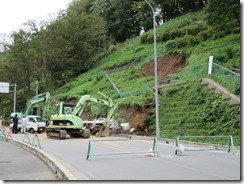
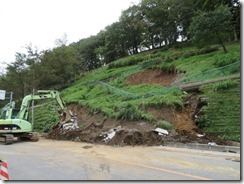
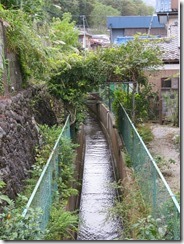
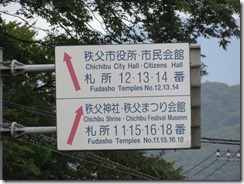
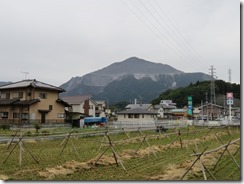
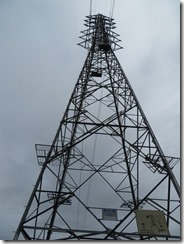
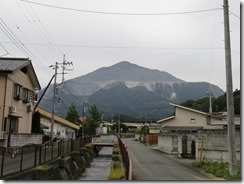
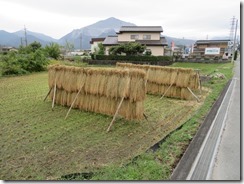
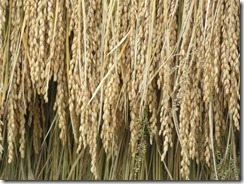
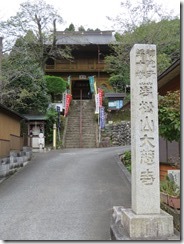
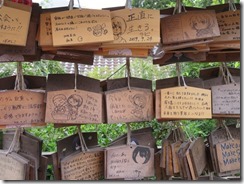
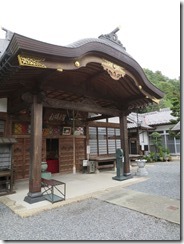
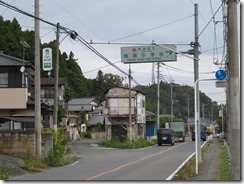
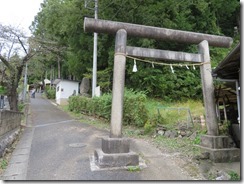
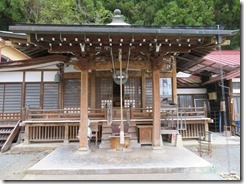
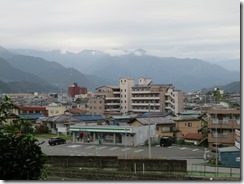
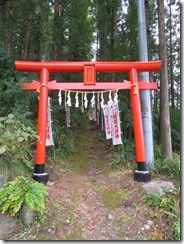
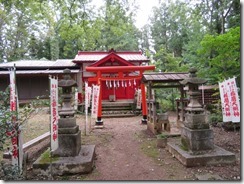
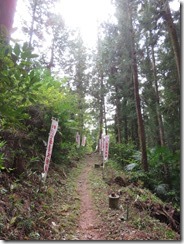
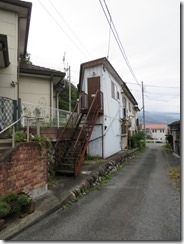

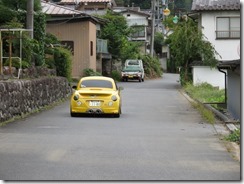
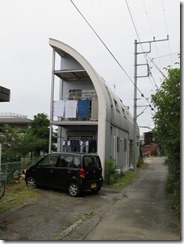
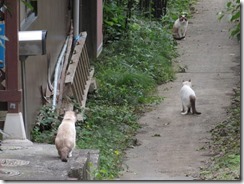
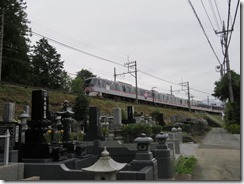
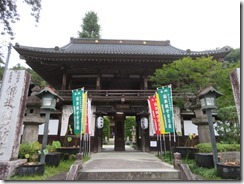
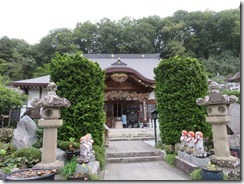
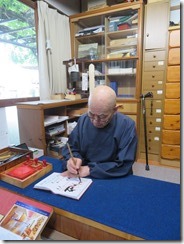
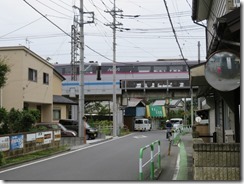
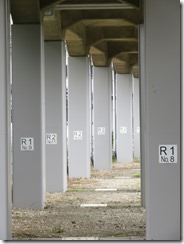

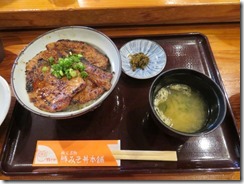
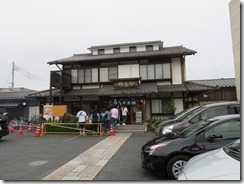
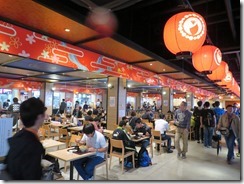
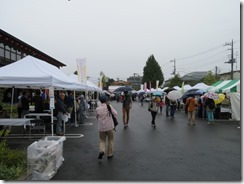
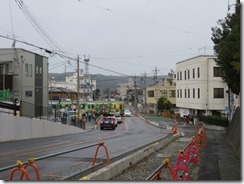

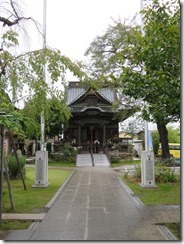
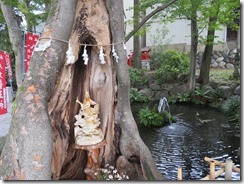
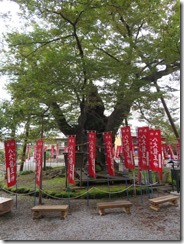

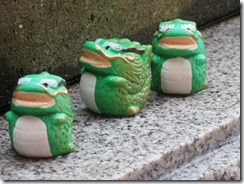
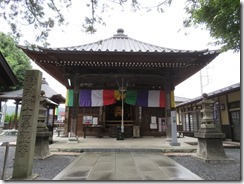
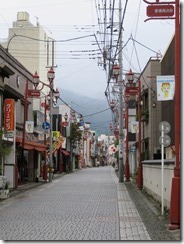
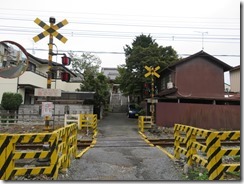
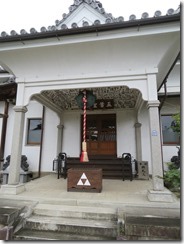
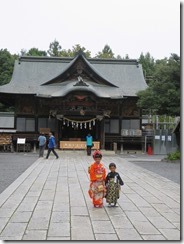


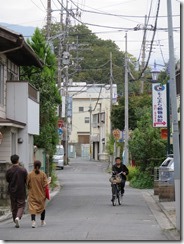
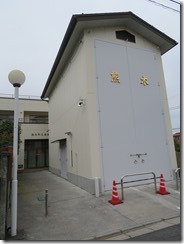


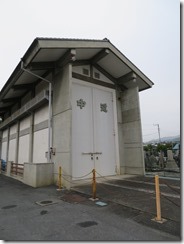
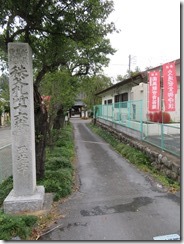
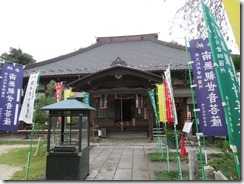
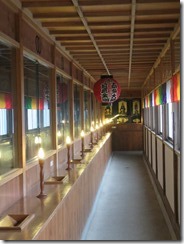
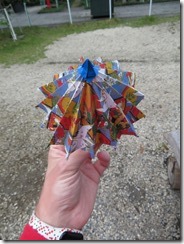
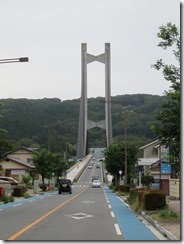
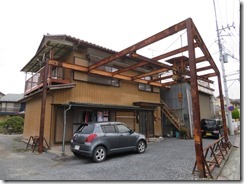
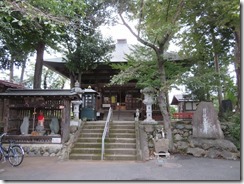
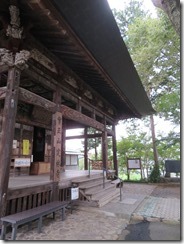
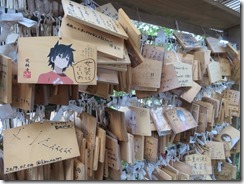
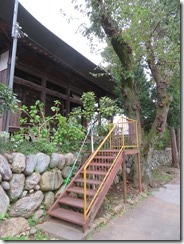
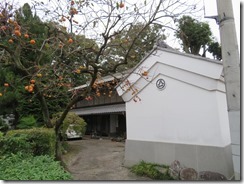
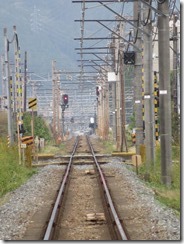

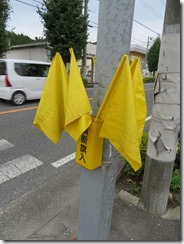
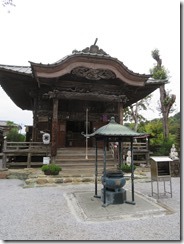
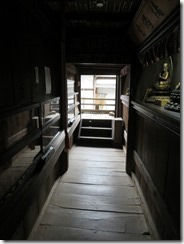
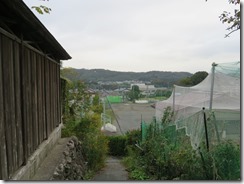
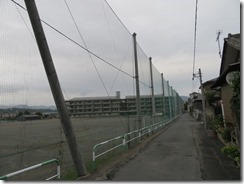
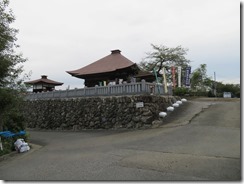
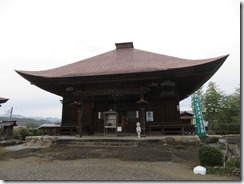
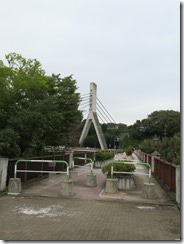
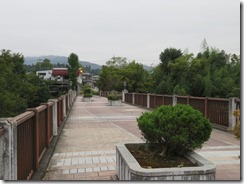

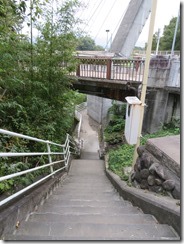
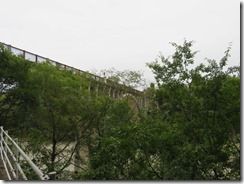
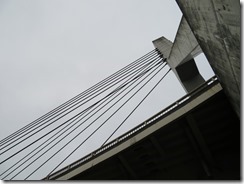
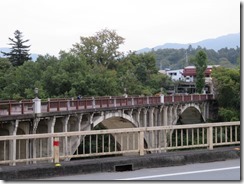

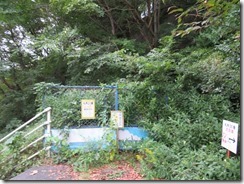
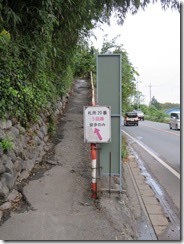
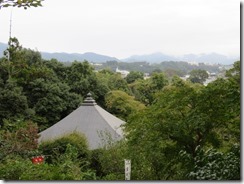
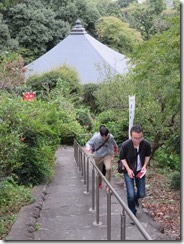
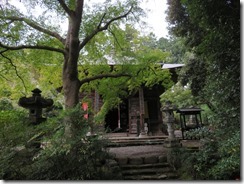
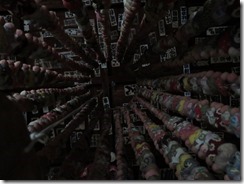
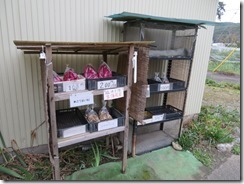
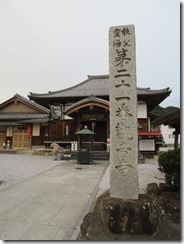
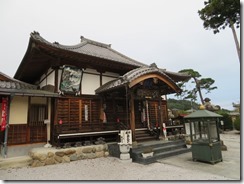
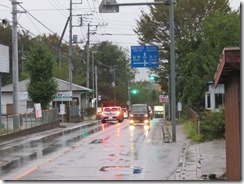
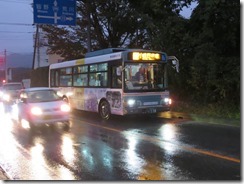

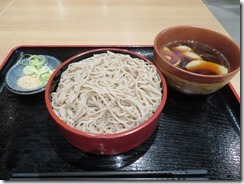
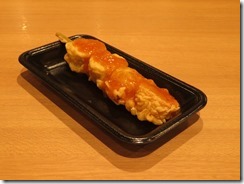
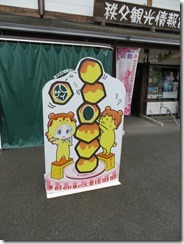
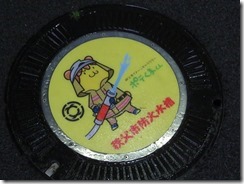
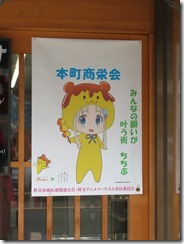
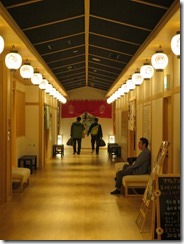
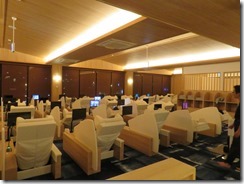
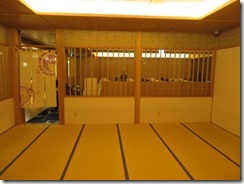
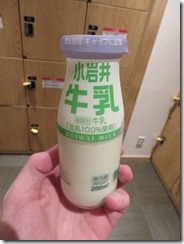
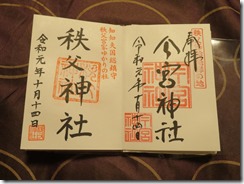
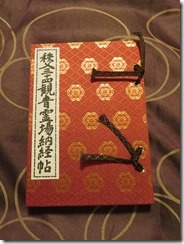
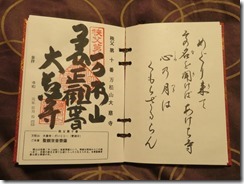
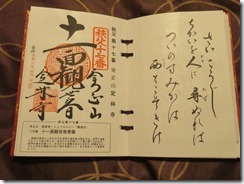
Thank you Joel. Great blog. You write so well I can imagine being there, eating the interesting food, walking the roads, looking at the temples, riding on the trains. Your photos are very good and really capture the beauty and significance of place and the tastiness of the food. I will continue to read as you post. Warm wishes Bettina
That’s a lot of walking!